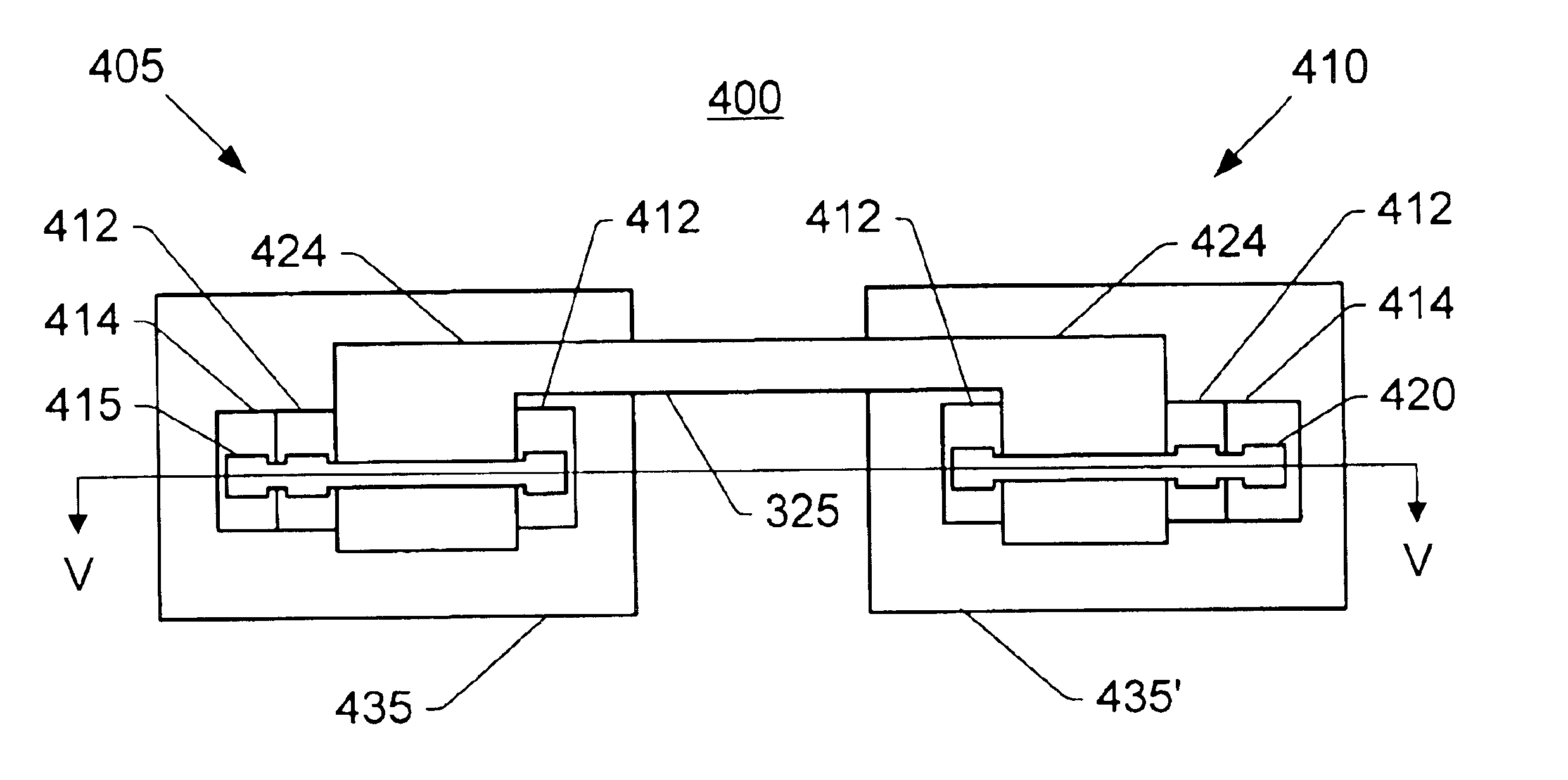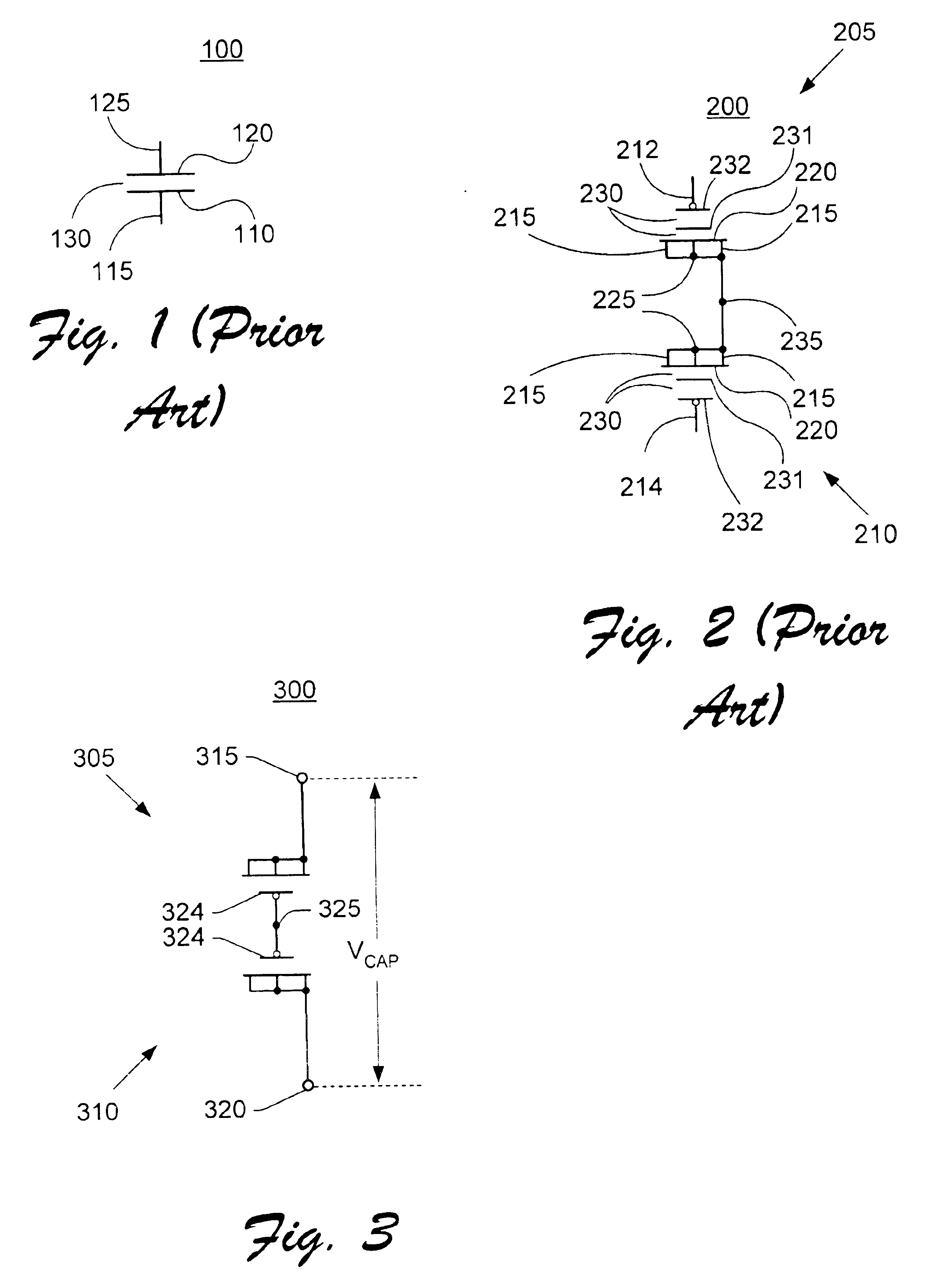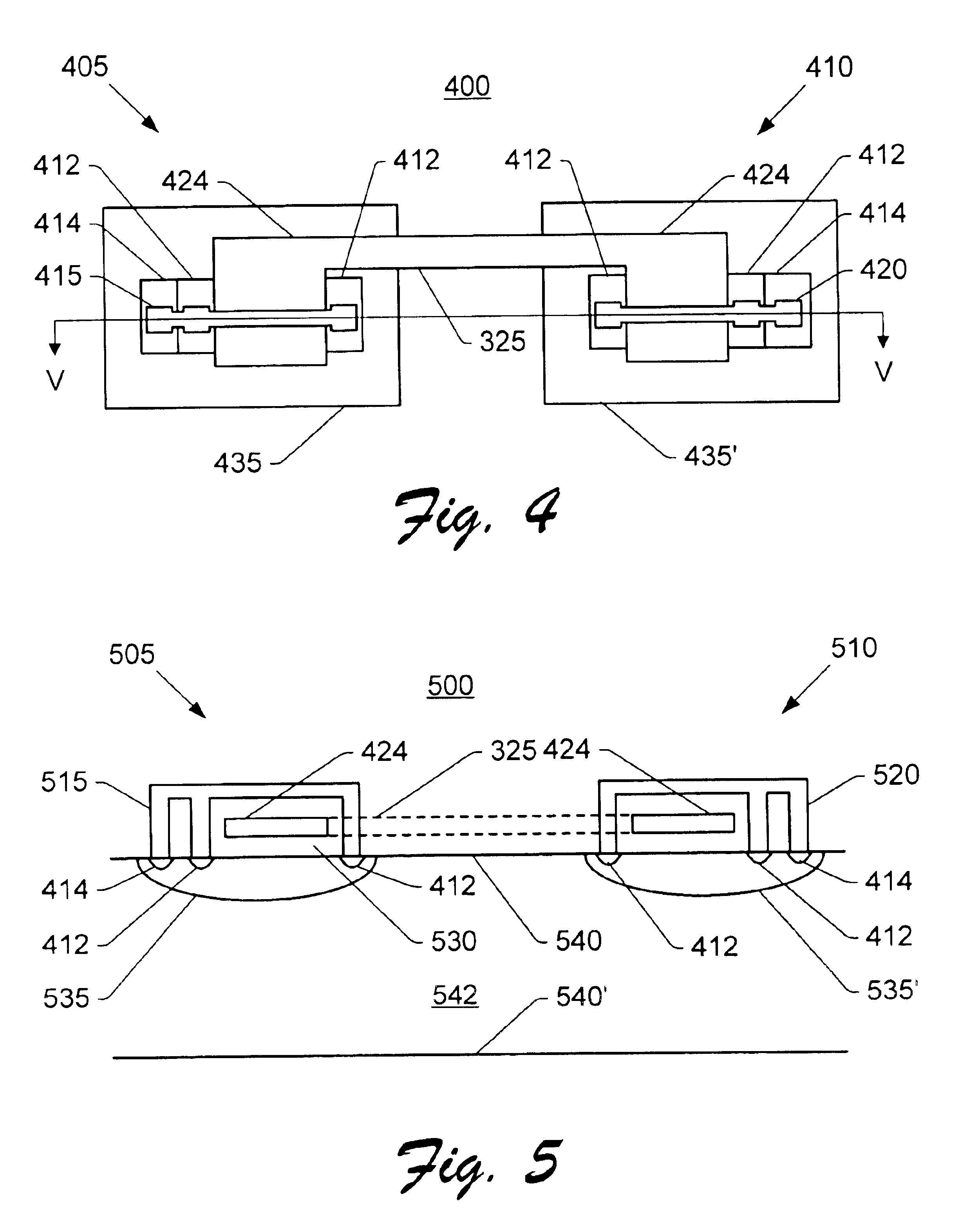High-voltage CMOS-compatible capacitors
a technology of cmos and capacitors, applied in the field of high-voltage capacitors, can solve the problems of poor form factor, large circuit layout, and inability to fabricate such control-gate structures in many modern cmos foundry processes,
- Summary
- Abstract
- Description
- Claims
- Application Information
AI Technical Summary
Benefits of technology
Problems solved by technology
Method used
Image
Examples
embodiments
FIG. 4 is an exemplary plan view of an embodiment 400 of the stacked high-voltage capacitor 300 of FIG. 3, and FIG. 5 is a side view, in section, taken along section lines V—V of FIG. 4, of an embodiment 500 of the stacked high-voltage capacitor 300 of FIGS. 3 and 4. FIG. 4 shows a first capacitor 405 and a second capacitor 410. The first 405 and second 410 capacitors may be formed alike, as illustrated, or may be formed differently, as will be discussed in more detail below.
In one embodiment, the first capacitor 405 includes at least one first node 412, an optional second node 414, a conductor 415 contacting and / or interconnecting the first node(s) 412 and the second node 414 and forming a first electrode 415 of the stacked capacitor 400 (analogous to the first capacitor electrode 315 of FIG. 3). A conductor 420 forms a second electrode 420 of the stacked capacitor 400 on the second capacitor 410 and establishes electrical contact with at least one node 412 and may make electrical ...
PUM
 Login to View More
Login to View More Abstract
Description
Claims
Application Information
 Login to View More
Login to View More - R&D
- Intellectual Property
- Life Sciences
- Materials
- Tech Scout
- Unparalleled Data Quality
- Higher Quality Content
- 60% Fewer Hallucinations
Browse by: Latest US Patents, China's latest patents, Technical Efficacy Thesaurus, Application Domain, Technology Topic, Popular Technical Reports.
© 2025 PatSnap. All rights reserved.Legal|Privacy policy|Modern Slavery Act Transparency Statement|Sitemap|About US| Contact US: help@patsnap.com



